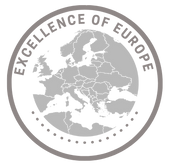5 Interesting Facts That You Probably Didn't Know About Turkey
- Ryan Evans

- Nov 4, 2024
- 3 min read
Turkey is widely known as a popular holiday destination for travelers from around the world, but it also holds significant historical importance. Once home to the Greeks, Romans, Ottomans, and the Byzantines, it continues to be one of the world's largest and most important countries to this day.
Turkey sits in a truly unique position on the border of both the European and Asian continents, but that's not the only distinctive aspect about the country. Here, we have compiled a list of five fascinating facts about Turkey that you probably didn't know, providing an opportunity to deepen your understanding of this remarkable nation.

Here are 5 facts that you probably didn't know about Turkey.
1. Turkey belongs to both Europe and Asia
Turkey's location straddles both the European and Asian continents. Although most of its land mass and population are within Asia, Turkey has strong ties to Europe. Turkish football teams participate in European competitions, the country has been associated with Eurovision since 1975, and its population on the European side surpasses that of many European nations. Istanbul, the only city in the world situated between two continents, is connected by the iconic Bosphorus Bridge, which symbolizes the unity between Europe and Asia.
2. Its Capital Isn't Istanbul
Contrary to popular belief, Istanbul is not the capital of Turkey. Ankara, located more than 400km east of Istanbul, has been the country's capital since 1923. The decision to move the capital from Constantinople (now Istanbul) was made by Mustafa Kemal Ataturk, the first president of the Turkish Republic. Ataturk aimed to establish a more centrally located capital for strategic and geographic reasons.
3. Camels Are Not Native to Turkey

Although Turkey is a well-known tourist destination, native camels are not found in the country. While camels can be seen in certain tourist areas or zoos, they are not commonly found in most regions of Turkey. However, in some rural or remote parts of southeastern Turkey, camels may be used for transportation or as tourist attractions.
4. The First-Ever Christian Church Was Built in Turkey
The first ever Christian church is known as the Church of St. Peter, or in Turkish, "Kilise-i Kebir." It is located in the ancient city of Antioch (now Antakya) in the Hatay Province of Turkey. This church holds historical significance as it is believed to have been established by the apostle Peter himself around 46 AD.
It is remarkable that one of the earliest Christian churches was constructed in what is now an Islamic country. During the time of the Roman Empire, Christianity spread throughout the region that encompasses present-day Turkey. Cities like Antioch played a crucial role in the early development of Christianity. Despite the subsequent rise of Islam, Turkey preserves its historical Christian sites, offering visitors the opportunity to explore significant landmarks such as the ancient city of Ephesus and the cave churches of Cappadocia.
5. Turkey is the 6th Most-Visited Country in the World

The country has been a popular tourist destination for decades, attracting millions of visitors each year. Along with France, Spain, Italy, China and USA Turkey is one of the world's most visited country and sees millions of tourists entering through its borders.
Turkey's popularity has to be attributed to its friendly people, cheap food and shopping, amazing historical sites and truly beautiful natural landscapes. Also being very generous when pouring alcohol is another plus!
Iconic landmarks like Istanbul's Hagia Sophia and Topkapi Palace, the ancient ruins of Ephesus, and the picturesque coastline of the Turquoise Coast all add to Turkey's appeal as a sought-after destination.
.png)








Comments